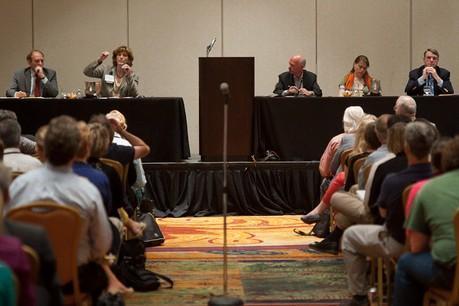If you fill out the "Forgot Password" form but don't get an email to reset your password within 5-10 minutes, please email logistics@ire.org for assistance.

By Perla Arellano and Erin Griffin
Pia Malbran of CBS News, David Corn from Mother Jones and Angie Moreschi from James Hoyer Law Firm discussed the relationship between journalists and whistleblowers and offered advice for protecting sources at the recent IRE Conference in San Antonio.
Moreschi explained the typical process of a whistleblower, she said, is see a red flag, report, and face retaliation.
When journalists are dealing with whistleblowers, they need to understand their motive, Malbran said. That motive is often frustration: the rules are being violated and concerns are being ignored. To the whistleblower, the information he or she is providing is very important.
“They are risking their career, their lives in order to be able to expose what they feel the public needs to know,” she said.
If you cannot verify the informaiton, you should make every attempt to verify the source (the whistleblower):
David Corn of Mother Jones talked about Scott Prouty, a whistleblower who came forward as the person who shot the “47 percent” video of Mitt Romney. He said that what Prouty had to go through was a psychological progress.
Corn said he talked to Prouty of what could happen if his identity was discovered.
“Think about what this would do to your life immediately,” Corn said he told Prouty.
Perla Arellano is a student at Amarillo College. Erin Griffin is a student at the University of Texas.

Looks like you haven't made a choice yet.